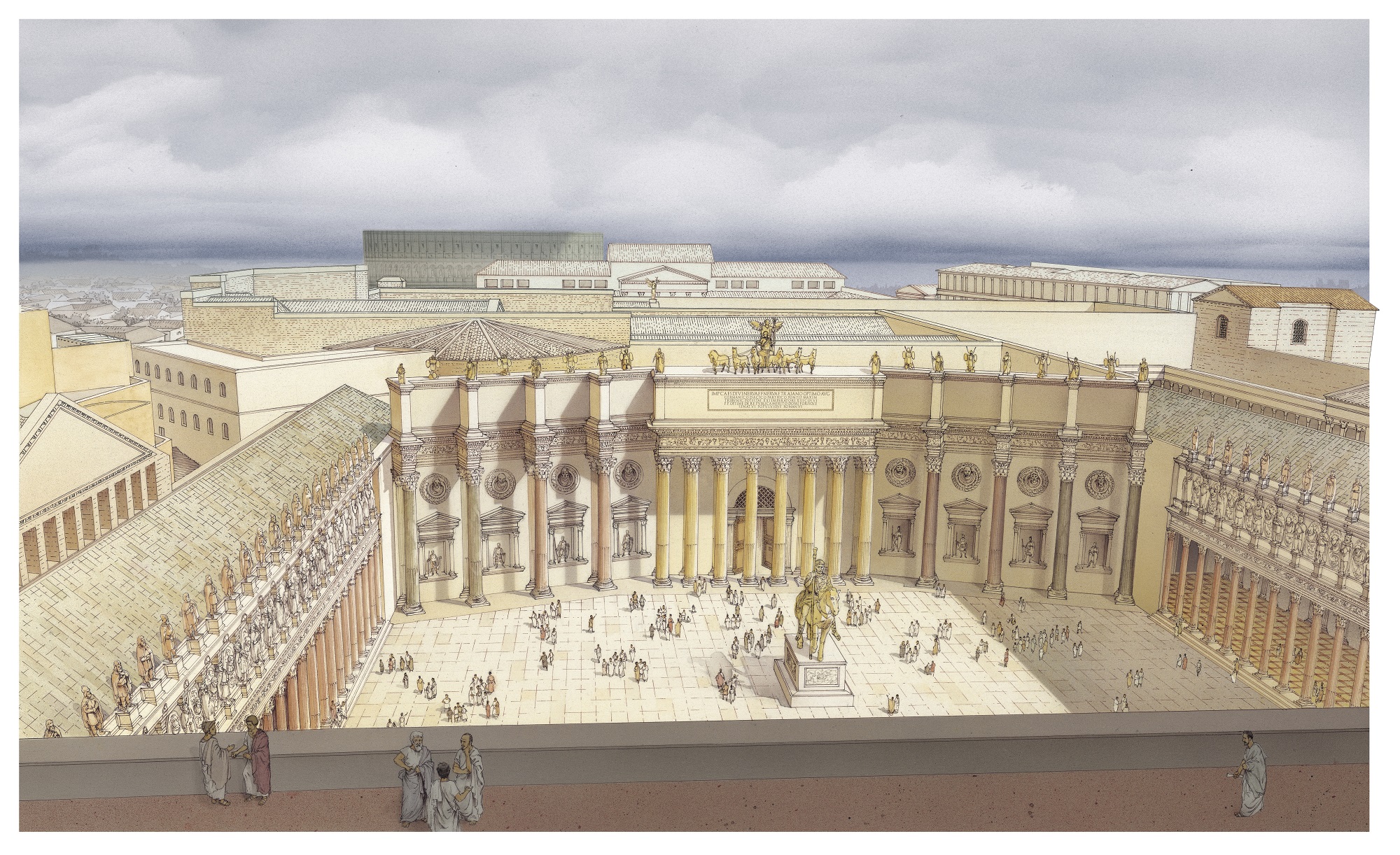Thanks to the excavations carried out between 1998 and 2000 by the Municipal Department of Monuments and Cultural Heritage, it has been possible to reconstruct the southern side of the square. This side was structured around a huge wall arranged in three sectors and decorated by monolithic columns made of colored marbles whose shafts were almost 12 meters tall.

In the two lateral sectors were groups of four Corinthian columns made of Cipollino marble (with green veins) and Pavonazzetto marble (white, with purple veins) projecting from the wall together with the trabeation. In the central sector an eight-column group supported a tall attic bearing the honorary inscription of Trajan. The attic was surmounted by a colossal bronze statuary group which depicted Trajan being crowned by Victory on a triumphal carriage pulled by six horses.
At the junction of the southern side and the eastern portico, the trajanic structures abut a tall earlier building, the so-called “Terrazza Domizianea” (= Terrace of Domitian). The brick stamps from this building allow to date its construction during the times of emperor Domitian (81-96 A.D.). Originally it was a monumental fountain located right at the end of the Marcian Aqueduct and it was subsequently abandoned once embedded in the trajanic structures.

Around 1470 the cardinal Marco Barbo, nephew of Pope Paul II (1464-1471) and Grand Prior of the Order of the Knights of St. John of Jerusalem (today Knights of Malta), built on the remains of the Terrace the elegant loggia with columns that you can see, in order to adorn the ancient Roman seat of the Order, dating from the late 12th century and still today one of the Roman seats of the Knights.
